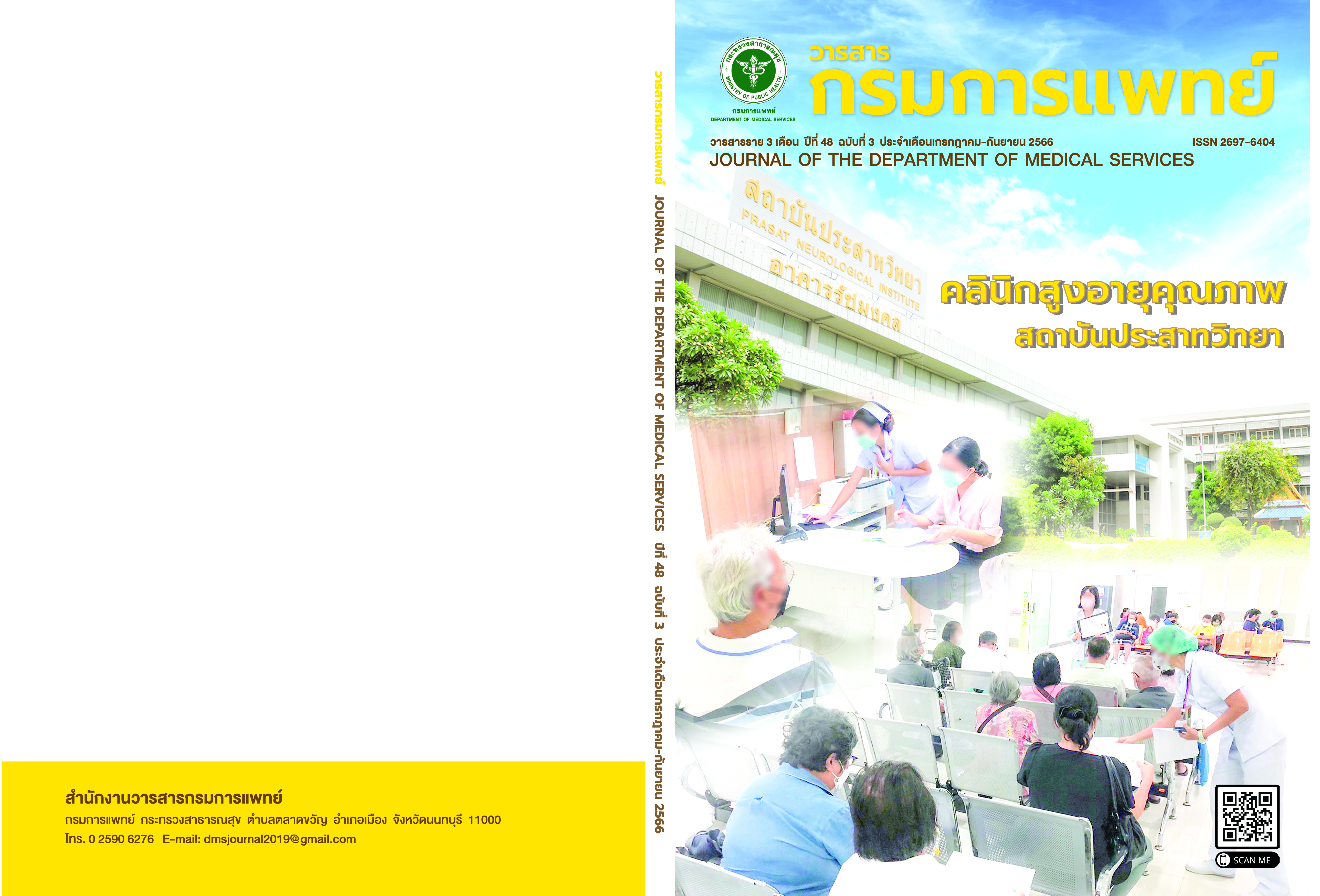Body-fluid Identification Using mRNA Analysis
Keywords:
mRNA, Tissue and body fluid identification, Forensic RNA analysis, Biological trace evidenceAbstract
Saliva, seminal fluid, sweat, or blood stains indicate different kinds of interaction between assailant and victim. The identification of biological origin of the tissue and body fluid collected from the crime scene or forensic evidence is crucial for criminal action reconstruction. Conventional analytical methods for body fluid identification consist of presumptive test for preliminary screening purpose and confirmatory test. The sensitivity of these conventional methods is usually the ratio of 1:400 to 1:100,000 dilution of the original body fluid specimen. There are also several limitations of the conventional method, such as long turnaround time, low specificity, and high amount of specimen consumption. Tissue-specific mRNA analysis has been recently developed and applied to identify body fluid and tissue type. Analytical sensitivity and specificity are greatly improved. It also enables the detection of multiple body fluids in a single reaction, significantly decreasing the specimen consumption. The analytical technique is the amplification of targeted nucleotide on specific mRNA strand by a PCR reaction. After the amplification, several novel detection technologies are applied.
References
Wasserstrom A, Frumkin D, Davidson A, Shpitzen M, Herman Y, Gafny R. Demonstration of DSI-semen-A novel DNA methylation-based forensic semen identification assay. Forensic Sci Int Genet 2013;7(1):136-42.
Johnston E, Ames CE, Dagnall KE, Foster J, Daniel BE. Comparison of presumptive blood test kits including hexagon OBTI. J Forensic Sci 2008;53(3):687-9.
Tröger HD, Schuck M, Tutsch-Bauer E. Nachweis von Speichelspuren Mittels Teststreifen [Detection of saliva traces using test strips]. Forensic Sci Int 1984;25(2):143-6.
Old JB, Schweers BA, Boonlayangoor PW, Reich KA. Developmental validation of RSID-saliva: a lateral flow immunochromatographic strip test for the forensic detection of saliva. J Forensic Sci 2009;54(4):866-73.
Allen SM. An enzyme linked immunosorbent assay (ELISA) for detection of seminal fluid using a monoclonal antibody to prostatic acid phosphatase. J Immunoassay 1995;16(3):297-308.
Hausmann R, Pregler C, Schellmann B. The value of the Lugol’s iodine staining technique for the identification of vaginal epithelial cells. Int J Legal Med 1994;106(6):298-301.
Idris B, Goodwin WH. Evaluating the sensitivity of presumptive and confirmatory tests for body fluids. Forensic Sci Int Genet 2022;8:276-8.
Roeder AD, Haas C. Body fluid identification using mRNA profiling. Methods Mol Biol 2016;1420:13-31.
Sijen T. Molecular approaches for forensic cell type identification: On mRNA, miRNA, DNA methylation and microbial markers. Forensic Sci Int Genet 2015;18:21-32.
Setzer M, Juusola J, Ballantyne J. Recovery and stability of RNA in vaginal swabs and blood, semen, and saliva stains. J Forensic Sci 2008;53(2):296-305.
Zhao H, Wang C, Yao L, Lin Q, Xu X, Hu L, et al. Identification of aged bloodstains through mRNA profiling: Experiments results on selected markers of 30- and 50-year-old samples. Forensic Sci Int 2017;272:e1-e6.
Sirker M, Schneider PM, Gomes I. A 17-month time course study of human RNA and DNA degradation in body fluids under dry and humid environmental conditions. Int J Legal Med 2016;130(6):1431-8.
Juusola J, Ballantyne J. Multiplex mRNA profiling for the identification of body fluids. Forensic Sci Int 2005;152(1):1-12.
Valore EV, Park CH, Quayle AJ, Wiles KR, McCray PB Jr, Ganz T. Human beta-defensin-1: an antimicrobial peptide of urogenital tissues. J Clin Invest 1998;101:1633-42.
Haas C, Hanson E, Kratzer A, Bär W, Ballantyne J. Selection of highly specific and sensitive mRNA biomarkers for the identification of blood. Forensic Sci Int Genet 2011;5(5):449-58.
Manasatienkij C, Nimnual A. Forensic blood stain aging using reverse transcription real-time PCR. Forensic Science International: Reports 2021;3.
Alshehhi S, McCallum NA, Haddrill PR. Quantification of RNA degradation of blood-specific markers to indicate the age of bloodstains. Forensic Sci Int Genet 2017;6:e453-5.
Bauer M, Kraus A, Patzelt D. Detection of epithelial cells in dried blood stains by reverse transcriptase-polymerase chain reaction. J Forensic Sci 1999;44(6):1232-6.
Jakubowska J, Maciejewska A, Pawłowski R. mRNA profiling in identification of biological fluids in forensic genetics. Problems of Forensic Sciences 2011;57:204-15.
Nolan T, Hands RE, Bustin SA. Quantification of mRNA using real-time RT-PCR. Nat Protoc 2006;1(3):1559-82.
Nussbaumer C, Gharehbaghi-Schnell E, Korschineck I. Messenger RNA profiling: a novel method for body fluid identification by real-time PCR. Forensic Sci Int 2006;157(2-3):181-6.
Sulewska A, Niklinska W, Kozlowski M, Minarowski L, Naumnik W, Niklinski J, et al. Detection of DNA methylation in eucaryotic cells. Folia Histochem Cytobiol 2007;45(4):315-24.
van den Berge M, Maaskant-van Wijk PA, Sijen T, van Soest S, Ypma RJF. Weight of evidence from mRNA data: Implementation of an LR-system for forensic body fluid identification in casework. Forensic Sci Int Genet 2022;8:210-2.
Downloads
Published
How to Cite
Issue
Section
License
Copyright (c) 2023 Department of Medical Services, Ministry of Public Health

This work is licensed under a Creative Commons Attribution-NonCommercial-NoDerivatives 4.0 International License.
บทความที่ได้รับการตีพิมพ์เป็นลิขสิทธิ์ของกรมการแพทย์ กระทรวงสาธารณสุข
ข้อความและข้อคิดเห็นต่างๆ เป็นของผู้เขียนบทความ ไม่ใช่ความเห็นของกองบรรณาธิการหรือของวารสารกรมการแพทย์



